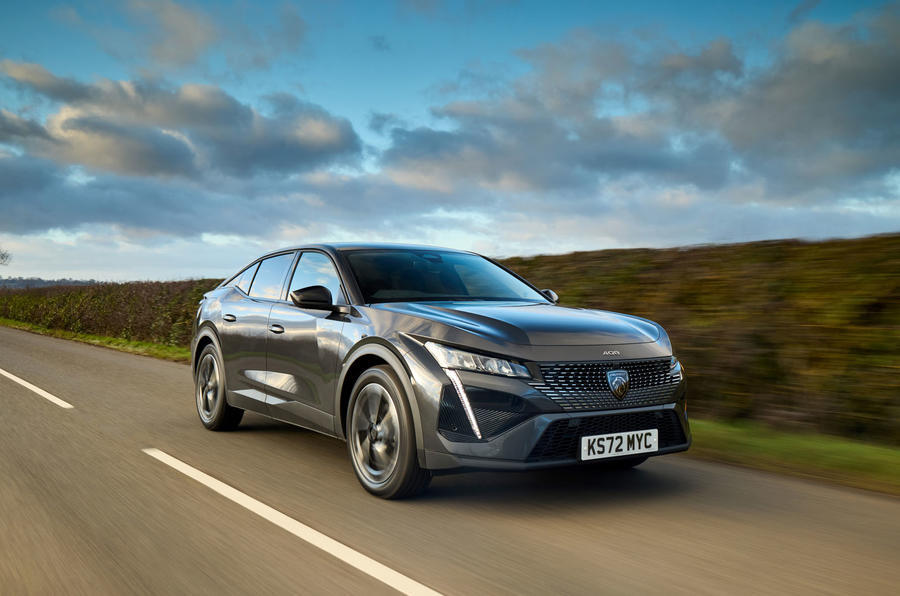Ancient mythology often combined the features of various creatures to create new ones. Think of the centaur, the minotaur and the sphinx. No longer content with simple hatchbacks, coupés and SUVs, Peugeot is doing the same with the Peugeot 408, which it described in the press presentation as the bottom half of an SUV with the top half of a fastback.
Unlike most sphinxes, the 408 also has the ears of a cat. Really – just look at the rear spoiler. But, according to the literature, it also has a ‘feline stance’. And like the man-lion-eagle hybrid, the 408 presents a bit of a riddle: what, and who, is it really for?
Here is a car that looks like an SUV and has the higher centre of gravity, but not the tall driving position or generous glasshouse. Then again, those same ingredients haven’t stopped the Cupra Formentor from becoming a success. Peugeot hopes that the 408’s unusual shape will be a catalyst for people who wouldn’t ordinarily consider the brand to take another look at it.

While the 408’s form may be something new, its mechanical package certainly isn’t. It’s all very familiar stuff from other Stellantis products. That means it’s underpinned by the latest V3 version of the EMP2 platform and is powered by either the 129bhp 1.2-litre Puretech three-pot, or the 1.6-litre plug-in hybrid powertrain. As with the Peugeot 308, the latter comes in 177bhp and 221bhp form. Manuals are fast becoming a thing of the past at Peugeot, so the eight-speed torque-converter auto is the only gearbox choice. An all-electric e-408 is on the way as well.
There are very few surprises inside. Up front, it’s all 308, really. The dashboard is the same, the centre console is the same and the i-Cockpit digital gauge cluster is the same. As with all other Peugeots, looking out over the small steering wheel at the high-set gauges works for some drivers, but not others. Same with the 3D effect on the gauges that comes on GT trim: it’s a really neat effect and I like it, but it gives some people a headache. At least you can turn it off.
The latest version of Peugeot’s infotainment works quickly and logically and you can configure the home screen to display the functions you need most often. It’s just frustrating that the only way to have the temperature control available all the time is for it to take over about half the screen.
Apart from a slightly different pattern for the upholstery, the front seats are 308 as well, which is no bad thing because they’re broadly comfortable and supportive. Taller drivers would be wise to spec the electric seats, though, as the manual ones don’t let you tilt the cushion.























Join the debate
Add your comment
It's got a GT and fastback name tag, looks like a big expensive car but the first time you want to up the pace you're reminded it's a 1.2 3 pot, one that cost 35k to boot.